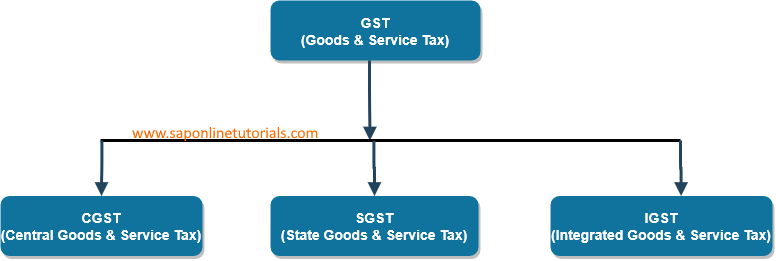What is SAP GST
The acronym GST stands for Goods & Service Tax, it is an indirect tax levied on goods and services. The new GST tax system replaces all the major indirect taxes levied by central and state governments in India.
The new indirect taxation system in India (GST) requires every business to register in every state of establishment. After successful registration, an identification number will be obtained which is also called as GSTIN (GST Identification Number).
Every organization should maintain the GSTIN number in the SAP system, along with their registered address.
Generally, taxes are divided into two types, i.e.
- Direct Taxes – Direct taxes are imposed on individual persons and paid directly to the government (e.g. Income Tax as it is collected directly from a person based on the income he/she earns)
- Indirect Taxes – Indirect taxes are imposed on goods & services and paid to the government via the third person (e.g. Service Tax).
GST Structure
GST can be divided into three types, i.e.
- CGST – CGST (Central Goods & Service Tax) refers to the tax levied by the center.
- SGST – SGST (State Goods and Service Tax) refer to the tax levied by the state.
- IGST – IGST (Integrated Goods and Service Tax) is levied by the center but divided between the center and state.

Advantages of GST
- GST replaces all the major indirect taxes, all central taxes will be replaced by CGST, and state taxes are replaced by SGST.
- GST removes cascading effect (tax on tax)
- GST helps in reducing the flow of black money.
Continue to read our SAP GST training tutorials.